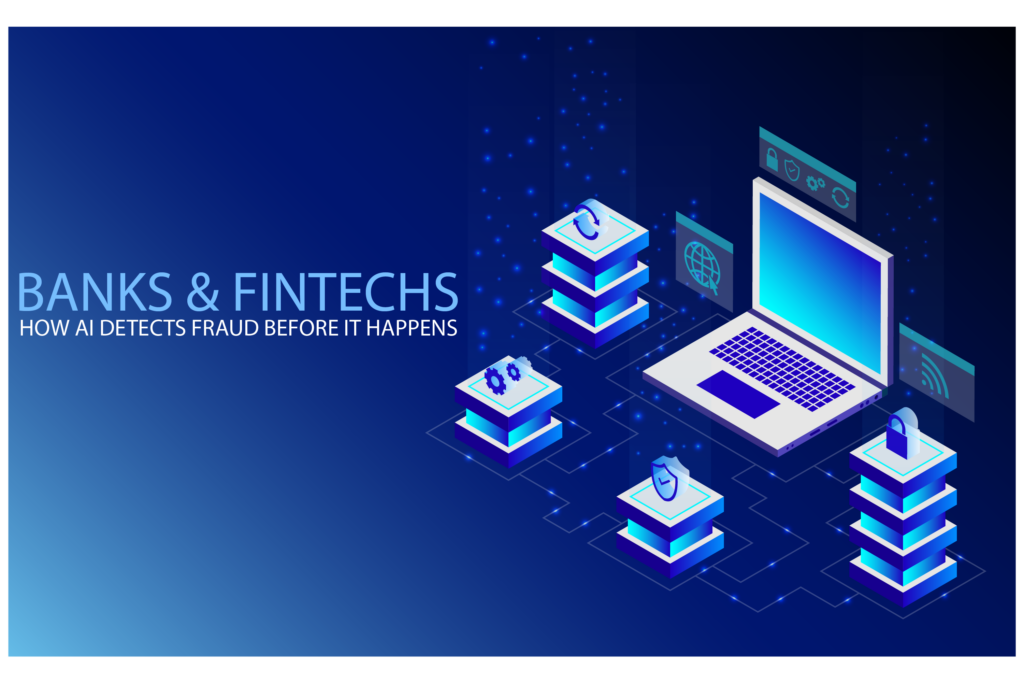

Fraud detection is one of the most critical challenges for banks and fintechs, representing a delicate balance between customer security and a seamless transactional experience. Historically, the defense against fraudulent activities has relied on static rule-based systems—value thresholds, transaction frequency, geolocation—which, while useful, are incapable of adapting to the speed and sophistication of modern attacks. This reactive approach often results in two operational failures: the inability to stop complex fraud that operates below the rule thresholds, and the generation of “false positives” that block legitimate transactions, causing friction and frustration for genuine customers.
In today’s hyper-digital landscape, where transactions occur in milliseconds and fraudsters use automation and stolen credentials to impersonate legitimate users, this reactive model is an invitation to disaster. The true defense lies not in stricter rules—which often result in “false positives” that block real customers and create friction—but in a paradigm shift. The answer is the application of Artificial Intelligence (AI) to analyze behavior, not just the transaction, allowing for the detection and blocking of fraud before the money leaves the account.
The Failure of Static Rules in Banks and Fintechs
Rule-based fraud detection systems fail because they are, by nature, predictable and slow to adapt.
- Predictability: Fraudsters learn the rules. If the limit is R
10,000,theywillperformmultipletransactionsofR10,000,theywillperformmultipletransactionsofR9,999. They know how to operate “under the radar.” - False Positives: A rigid rule doesn’t understand context. It might block the legitimate purchase of a last-minute plane ticket because the amount is “unusual,” causing a terrible customer experience.
- Reactivity: A rule is only created after a new fraud pattern is identified and causes a loss. The institution is always one step behind the fraudster.

The AI Paradigm Shift: From Transaction to Behavior
An AI-based fraud detection system doesn’t ask, “does this transaction violate any rules?”. It asks: “Is this transaction consistent with this user’s historical behavior?”. Each customer has a unique “behavioral fingerprint,” and AI is an expert at recognizing it in real time.
The Machine Learning engine analyzes hundreds of variables in milliseconds to generate a “risk score” for each transaction. These variables include:
- Geolocation: Do the login and transaction come from different cities or countries within an impossible time frame?
- Time Pattern: Is the customer, who always transacts during business hours, making a purchase at 3 a.m.?
- Device (Fingerprinting): Is it the same phone or browser they always use?
- Value and Frequency: Has the spending pattern abruptly changed from small purchases to a single high-value transaction?
- Navigation Pattern: Did the “person” navigate the app in a human way, or are they executing actions at the speed of an automated script?
If the risk score exceeds a threshold, the transaction can be preventively blocked or forwarded for a secondary verification (like an SMS code), stopping the fraud before it is completed.
The Invisible Pillar: Database Performance as an AI Enabler
The promise of real-time detection is powerful, but it has an Achilles’ heel that many institutions discover the hard way: the performance of the underlying database.
Your state-of-the-art AI model is useless if the data it needs to make a decision arrives too late. To calculate the risk score, the AI engine needs, in sub-seconds, to query the database to get the customer’s transaction history, their login patterns, their known devices, etc.
The “Too Late” Principle: If the database query to fetch the customer’s history takes 500 milliseconds, the fraud has already happened. The transaction has already been approved and the money is gone before your “real-time engine” had a chance to analyze it. Database latency is the vulnerability that nullifies the entire investment in AI.
dbsnOOp: Ensuring the Necessary Speed for Fraud Prevention
dbsnOOp is not a fraud detection platform. We are the observability platform that ensures your AI fraud detection initiative works at the speed the business demands. Our role is to eliminate the database bottleneck so that your AI engine can operate with the minimal latency required for prevention.
- AI Query Optimization: The queries executed by AI models are complex. dbsnOOp analyzes these queries, identifies inefficiencies (like the lack of an index to support the search for a behavioral pattern), and recommends the exact optimizations to ensure they execute in microseconds, not milliseconds.
- Data SLA Guarantee: We continuously monitor the health and performance of your database 24/7. This ensures that the data foundation that feeds your AI models is stable, predictable, and capable of supporting the high-frequency workload that real-time detection demands.
- Infrastructure Resilience: We ensure the database is always available and performant, preventing a failure in the data infrastructure from becoming the blind spot that allows a wave of fraudulent transactions to pass through.
In the financial sector, trust is the most valuable asset. Protecting it requires more than rules; it requires intelligence. And intelligence requires speed.
Don’t let data slowness be the vulnerability your fraudsters exploit. Build the performance foundation for a truly predictive defense. Schedule a meeting with our specialist or watch a live demo!
Schedule a demo here.
Learn more about dbsnOOp!
Learn about database monitoring with advanced tools here.
Visit our YouTube channel to learn about the platform and watch tutorials.

Recommended Reading
- AI Database Tuning: Real-time fraud detection requires a high-performance database infrastructure. This article explains how Artificial Intelligence is applied to optimize this foundation, ensuring the speed your AI models need to be effective.
- The Difference Between Log Monitoring and Real-Time Monitoring: The main article describes the shift from a reactive (rule-based) approach to a predictive (AI-based) one. This post delves into that philosophy, explaining why real-time monitoring is the only viable approach for detecting ongoing threats, in contrast to forensic log analysis.
- What does your company lose every day by not using AI?: This article serves as a strategic complement, broadening the discussion beyond fraud. It quantifies the daily losses in agility, cost, and innovation that companies face by not adopting AI in their operations, reinforcing the business case for your initiative.

